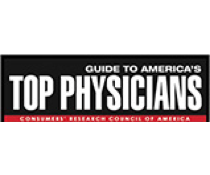There is a warning label on the Riddell sports website, the nation’s largest manufacturer of football helmets, and official supplier to the NFL that reads;
No helmet can prevent serious head or neck injuries a player might receive while participating in football. Do not use this helmet to butt, ram or spear an opposing player. This is in violation of the football rules and such use can result in severe head or neck injuries, paralysis and death to you and possible injury to an opponent.
There is no sugar coating here. Football is a contact sport, and the number of serious injuries is alarmingly high. In the 1990’s, almost five times as many football players were sent to hospitals for neck injuries when compared to soccer and ice hockey players combined. In fact, only 6 of 32 NFL teams are entering the 2013-2014 season with no injuries to report. This number is simply astounding.
The Riddell warning goes on to elaborate that symptoms may include things like loss of memory, loss of consciousness, and dizziness. Despite the warning, NFL players continue to step onto the field wearing one of their helmets, because they are simply the best option. At the same time lawsuits against leagues, coaches and equipment makers are mounting across the country, causing renewed scrutiny of equipment.
How effective are these warning labels? As with most warnings, companies seek a balance in how much information to provide to consumers. Research shows consumers are predisposed to ignore warnings, or dismiss them as being overly cautious.
Helmet companies guide their products toward risk reduction instead of prevention because, ultimately, the risk is unavoidable. Sometimes the risk does not even come from an opponent. Just last year, a football player at Tulane University broke his neck when he collided with a teammate as he attempted to make a tackle. Chances are, he will never walk again.
Another issue is that players often fail to report potential injuries, for fear of being benched. The NFL issues a test to players before every season, in which players are shown a list of 20 words and asked to write down as many as they can remember after it is taken away. The test is designed to reveal if players are concussed or reveal other head and neck injuries, but players are notorious for cheating on these tests..
The bottom line is that accidents can happen even if all the equipment is functioning properly and being used properly. The best thing you can do as a player or parent is to be aware of the risks, use the equipment properly, and follow safe practices/ techniques when playing. If your child is the one playing, take the time educate them on both the risks as well as proper and safe technique.
– Football Helmet Safety









